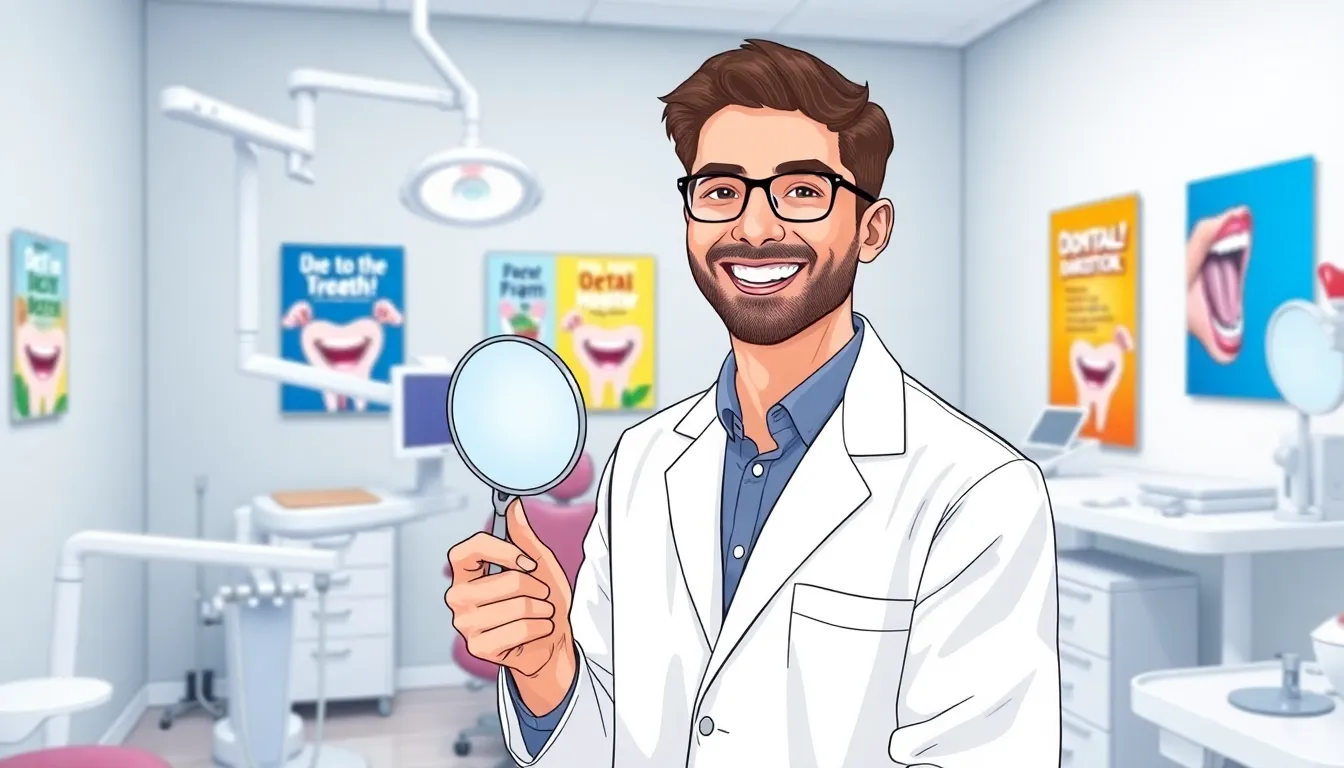Table of Contents
ToggleCavities are like uninvited guests at a party—no one wants them, but they somehow manage to crash anyway. These pesky little holes in teeth can turn a sweet smile into a painful frown faster than you can say “sugar rush.” The good news? Preventing cavities doesn’t require a magic wand or a secret potion; it just takes some simple habits and a sprinkle of humor.
Understanding Cavities
Cavities, often viewed as one of the most common dental issues, can affect people of all ages. Understanding their nature leads to better prevention strategies.
What Are Cavities?
Cavities are permanent damages to the tooth structure, resulting in holes or openings. They develop when bacteria in the mouth produce acid that erodes tooth enamel. This process often begins with plaque formation, where sugar-rich foods contribute to bacterial growth. Recognizing early signs of cavities, such as sensitivity or visible holes, is crucial for effective treatment.
Causes of Cavities
Multiple factors contribute to cavity formation. Regular consumption of sugary and acidic foods increases the likelihood of cavities. Inadequate oral hygiene habits, such as infrequent brushing, also play a significant role. Additionally, a lack of fluoride can diminish the teeth’s natural defense against decay. Certain medical conditions may further elevate cavity risks, emphasizing the importance of maintaining dental health.
Importance of Cavity Prevention

Cavity prevention holds significant importance in maintaining overall dental health. The consequences of neglecting cavities extend beyond mere tooth decay.
Health Implications
Cavities can lead to severe health issues. Untreated cavities may cause infections that affect overall health. The risk of abscesses increases, which can result in chronic pain or complications. Gum disease often develops as a result of neglected cavities, leading to further health concerns. Additionally, strong connections exist between oral health and systemic conditions such as diabetes and heart disease. Prioritizing cavity prevention fosters better oral health and contributes to overall well-being.
Economic Impact
Cavity treatment can incur substantial costs. Dental procedures, including fillings and crowns, require financial investment. According to the American Dental Association, untreated cavities can lead to more significant dental issues, increasing treatment expenses. Individuals without dental insurance face even greater financial strain, with average costs reaching hundreds of dollars. Investing in preventative measures, such as regular check-ups and basic oral hygiene practices, can significantly reduce long-term expenses and promote financial health.
Effective Cavity Prevention Strategies
Cavity prevention hinges on several key strategies. Implementing these practices leads to healthier teeth and gums.
Oral Hygiene Practices
Daily oral hygiene practices significantly reduce the risk of cavities. Brushing teeth twice each day with fluoride toothpaste is crucial. Flossing once daily removes food particles and plaque from between teeth. Rinsing with an antibacterial mouthwash further strengthens oral health. Using a soft-bristled toothbrush minimizes gum irritation, ensuring effectiveness while preventing damage. Adopting these habits creates a strong defense against tooth decay.
Dietary Considerations
Dietary choices play a vital role in cavity prevention. Limiting sugary snacks and beverages decreases acid production from bacteria. Opting for nutrient-rich foods, such as fruits, vegetables, lean proteins, and dairy products, supports enamel health. Drinking plenty of water helps wash away food particles and neutralizes acids. Regularly consuming foods high in calcium and phosphorus promotes remineralization of enamel. Making informed choices enhances overall dental well-being.
Regular Dental Check-ups
Regular dental check-ups are essential for cavity prevention. Visiting a dentist every six months enables early detection of potential issues. Professional cleanings remove plaque that regular brushing may miss. During these visits, dentists can apply fluoride treatments that strengthen enamel. Routine examinations help identify and address early signs of cavities, ensuring prompt intervention. Prioritizing these appointments fosters a proactive approach to oral health.
Dental Treatments for Cavity Prevention
Dental treatments play a crucial role in cavity prevention, ensuring teeth remain healthy and protected. Two effective options include sealants and fluoride treatments.
Sealants
Sealants act as a protective coating for teeth, particularly molars. These thin layers of plastic bond to the tooth enamel, shielding against decay-causing bacteria and food particles. Studies show that sealants can reduce the risk of cavities by nearly 80% in children. Dentists typically apply them in a quick, painless process during routine visits. Once applied, sealants can last several years with proper care. Regular dental check-ups ensure they remain intact and effective.
Fluoride Treatments
Fluoride treatments strengthen tooth enamel and make it more resistant to acid attacks from plaque and sugars. Professional fluoride applications, available in gels, foams, or varnishes, deliver concentrated fluoride directly to the teeth. Research highlights that these treatments can decrease cavity risk by up to 45% in high-risk individuals. Dentists usually recommend fluoride treatments every six months or as needed. Access to fluoride in drinking water also supports general cavity prevention, reinforcing oral health for individuals of all ages.
Cavity prevention is essential for maintaining a healthy smile and overall well-being. By adopting simple daily habits like brushing and flossing along with making mindful dietary choices, individuals can significantly reduce their risk of cavities. Regular dental check-ups and professional treatments like sealants and fluoride applications play a vital role in keeping teeth strong and cavity-free. Prioritizing these practices not only protects dental health but also helps avoid costly treatments down the line. Embracing a proactive approach to oral care ensures that smiles remain bright and healthy for years to come.







